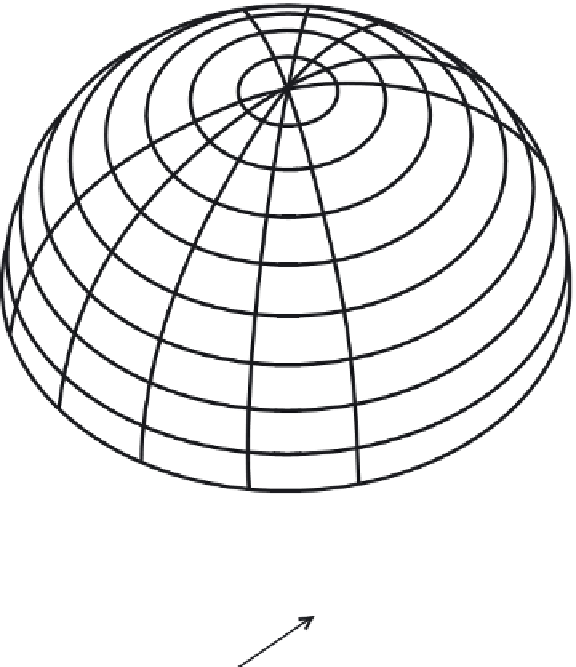Biology Reference
In-Depth Information
FIGURE 4.9
Half of the space of
triangles that have been centered,
scaled to unit centroid size and
aligned with a centered, scaled equi-
lateral triangle. The equilateral trian-
gle is at the pole. Lines of “latitude”
represent shapes equidistant from
the equilateral triangle. The “equa-
tor” corresponds to the set of trian-
gles with most different from the
reference, which for
the case of
equilateral
triangles,
is a reflected
version of
the
reference
(
Rohlf,
1999
).
FIGURE 4.10
A slice through part of
the space of aligned triangles at unit cen-
troid size, showing the relationships among
the distances between the reference shape
(at 0, 1) and
(0, 1)
ρ
A
. The semicircle is a cross-
section of the space, which is a hemisphere
of radius one. The length of the arc is the
Procrustes distance (
A
D
p
B
), the length of the
chord is the partial Procrustes distance (
D
p
),
and the shortest possible distance (obtained
by relaxing the constraint on centroid size,
producing the configuration
ρ
D
F
ρ
cos (
ρ
)
B
) is the full
Procrustes distance (
D
F
).
(
1, 0)
(1, 0)
(0, 0)
configurations. Conventionally, we keep the centroid size of the reference at one, and
allow the centroid size of the target to adopt the value that minimizes its distance from
the reference. This is equivalent to allowing the target to travel along its radius while the
reference stays on the surface. The point along the radius where the second shape is clos-
est to the target is some distance below the surface of the shape space, reflecting a reduc-
tion of the centroid size of the target. This point (B) is defined by the line that is
perpendicular to the target's radius and passes through the reference's position on the sur-
face. The corresponding centroid size of the target is cos(
ρ
); the distance between config-
urations is sin(
ρ
) and is called the
full Procrustes distance
(
D
F
).














